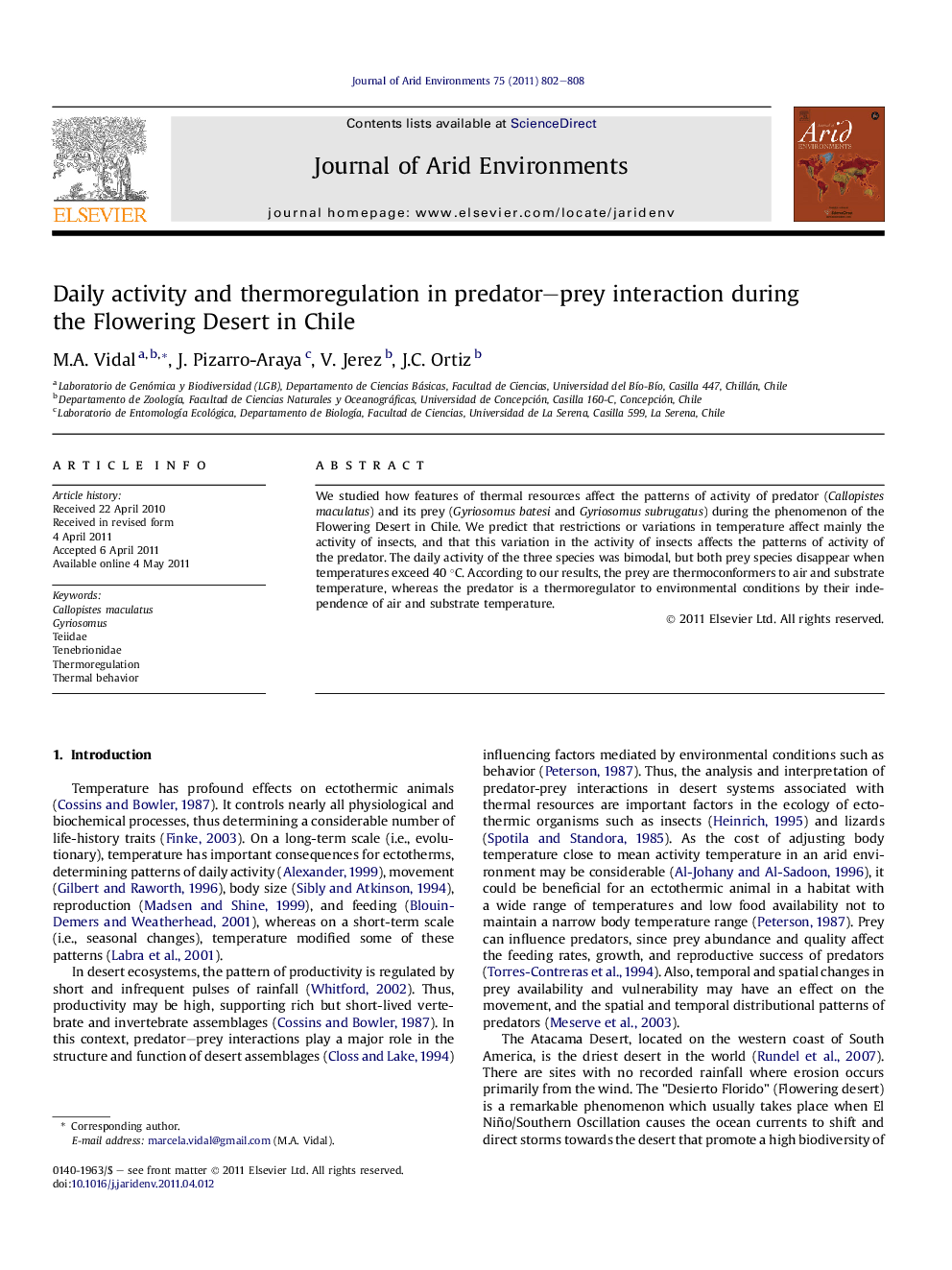| Article ID | Journal | Published Year | Pages | File Type |
|---|---|---|---|---|
| 4393625 | Journal of Arid Environments | 2011 | 7 Pages |
We studied how features of thermal resources affect the patterns of activity of predator (Callopistes maculatus) and its prey (Gyriosomus batesi and Gyriosomus subrugatus) during the phenomenon of the Flowering Desert in Chile. We predict that restrictions or variations in temperature affect mainly the activity of insects, and that this variation in the activity of insects affects the patterns of activity of the predator. The daily activity of the three species was bimodal, but both prey species disappear when temperatures exceed 40 °C. According to our results, the prey are thermoconformers to air and substrate temperature, whereas the predator is a thermoregulator to environmental conditions by their independence of air and substrate temperature.
► We studied the thermal resources of predator–prey during the Flowering Desert. ► We predict restrictions in insect activities that affect the predator activity. ► The activity was bimodal in all species, but prey disappear to high temperatures. ► Prey are thermoconformers, whereas the predator is a thermoregulator. ► We conclude that predator is efficient in the use behavioral mechanisms.
